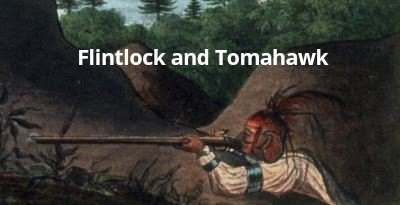Indian tactics while raiding from Gavin K. Watts The Burning of the Valleys
"All of the men carried the axe and knife. In the van were warriors called “runners” who were armed with spontoons. Their task was to pursue and kill anyone who broke and ran. Most of the main body were armed with firelocks and these warriors were called “gunners”; these second wave men would scalp any of the victims who had been bypassed, gather in and guard the captives, destroy or take the livestock, plunder and destroy the buildings. Such a dense mass of men would have been an ideal target for any disciplined form of resistance, but there was none, either expected or encountered. The Indians understood that speed would give them surprise, which in turn would ensure the taking of captives. Surprise also prevented the hiding of family treasures, so the plunder would be of the best quality. Also, there was no time to release the livestock into the woods, so it was easily destroyed or collected and driven to the rear as victuals."
"The captive Steele wrote how one man described his warning of the Indians’ approach. Before he could see the advancing mass, there was a noise of sheep or cattle running at full speed through water. This fluid-like sound of their running must refer to the dull jangling of the small metal cones with which the Indians decorated the outside edges of their garments. When moving stealthily, even the smallest sound from the cones warned the wearer that he might be heard. When moving at speed, the cones struck together making this distinctive, water-like rushing noise. Contrary to what one might expect, there was great discipline in this attack and the advancing band “kept a profound silence” as they ran forward. Prisoners who were taken were warned to keep utterly silent on pain of death. The terrifying war halloo and the triumphant scalp call were held until a predetermined signal."






No comments:
Post a Comment